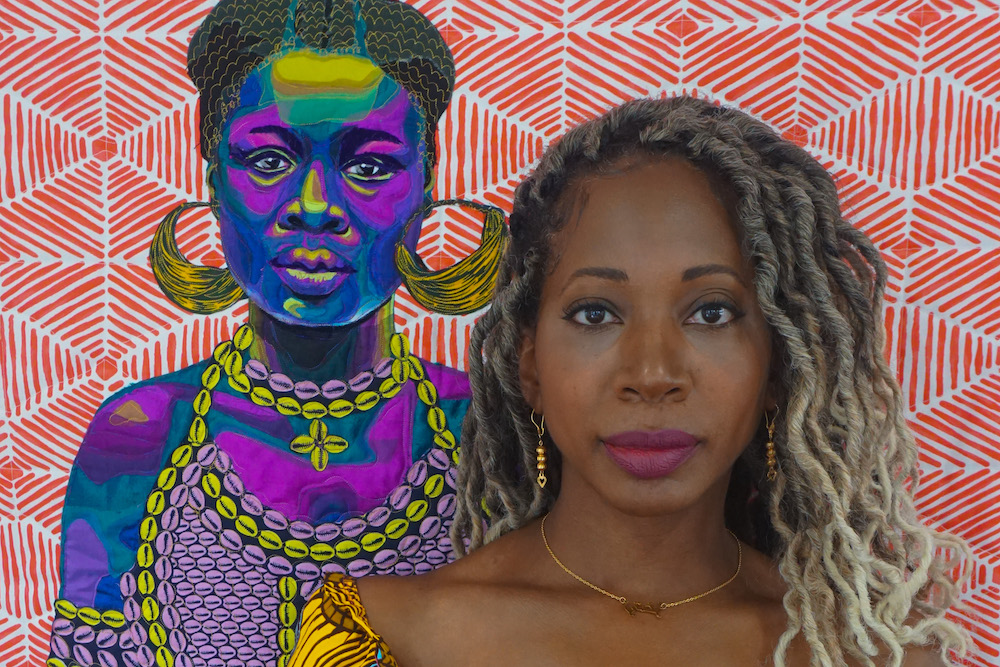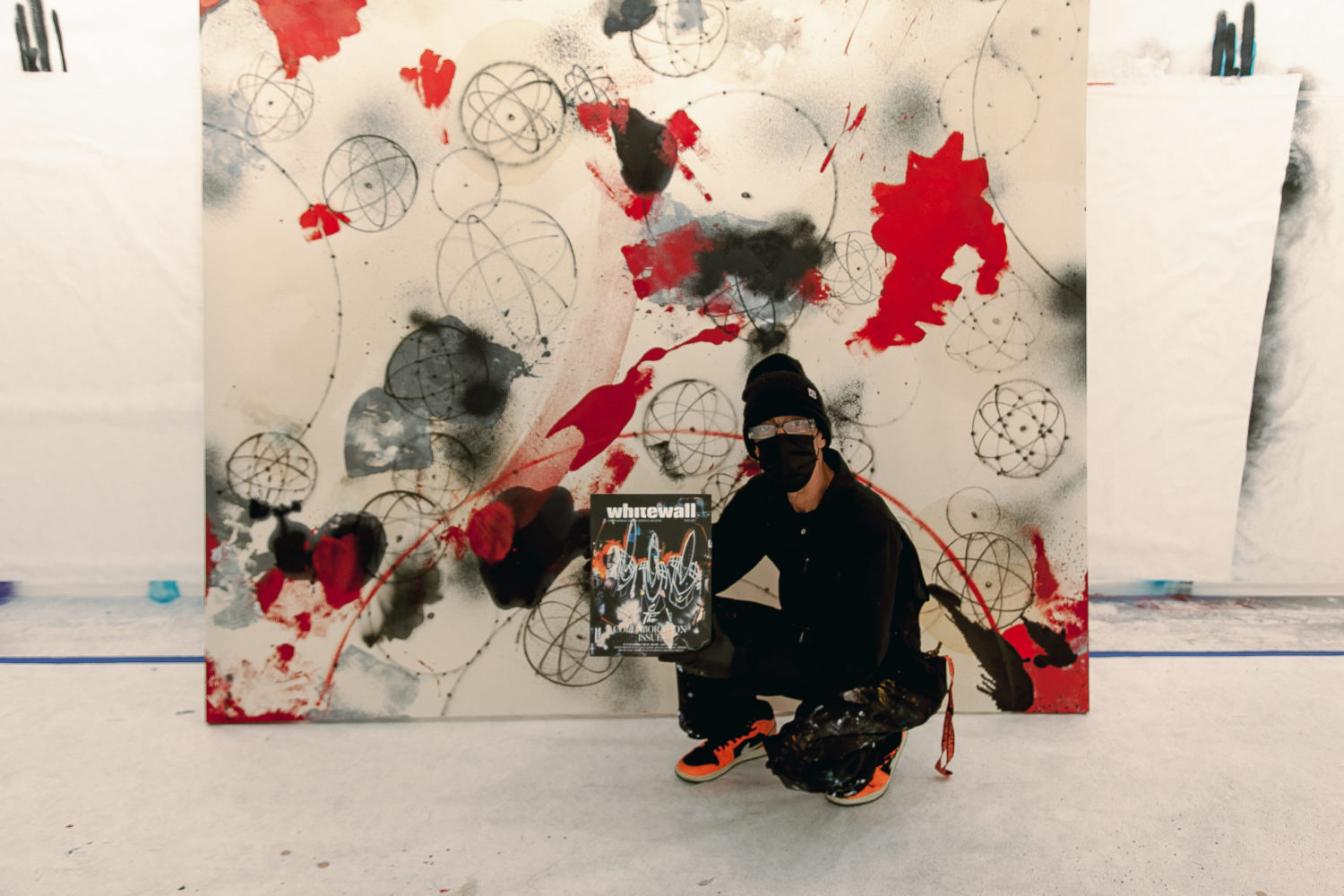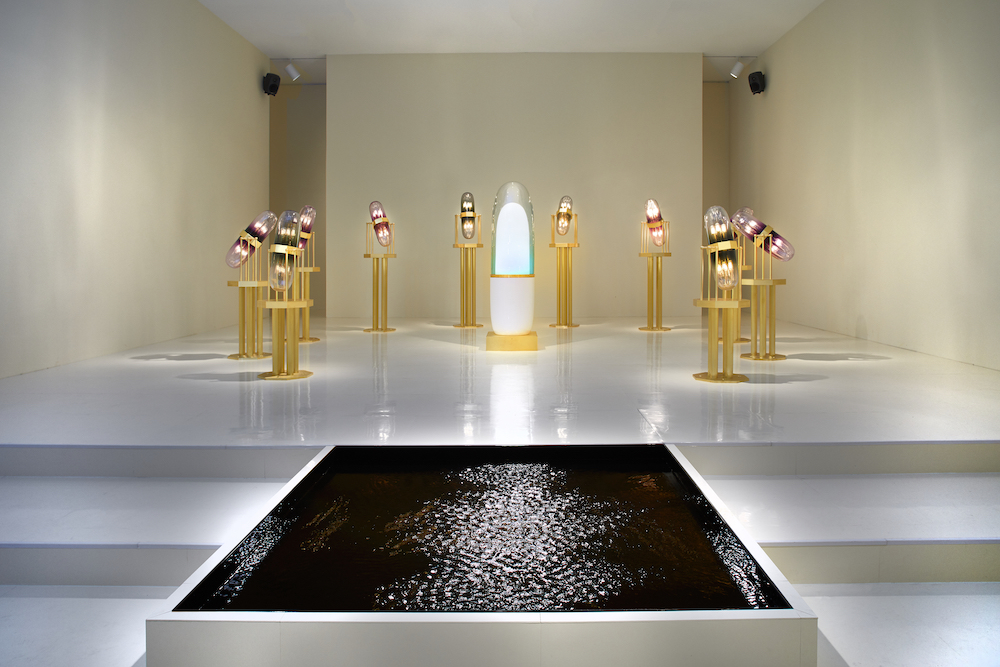Grace Lynne Haynes’s paintings of the Black female figure are full of texture, color, and nuance. Inspired by fashion, travel, and design, she portrays her subjects at leisure—comfortable in their environment, at ease and at peace.
Part of the inaugural group of Kehinde Wiley’s Black Rock Senegal residents, Haynes wants to convey the full spectrum of Black womanhood, not just strength but vulnerability and softness. The interplay of the Black human form and its pastel surroundings challenges traditional Western artistic notions of dark and light.
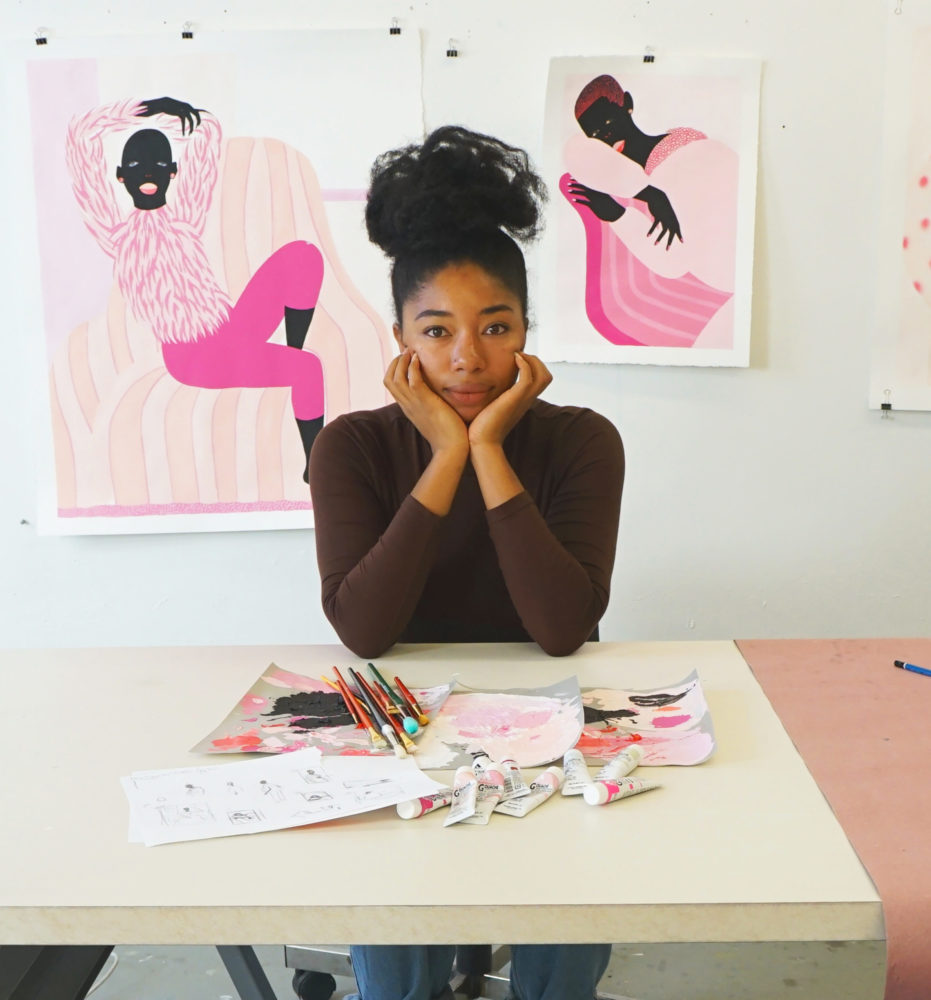
Courtesy of the artist.
Whitewall spoke with Haynes, who will have her first European solo show with Luce Gallery in Turin, Italy, next year.
WHITEWALL: In August, you were commissioned for a cover for The New Yorker and you created a portrait of Sojourner Truth. What was it like to paint her?
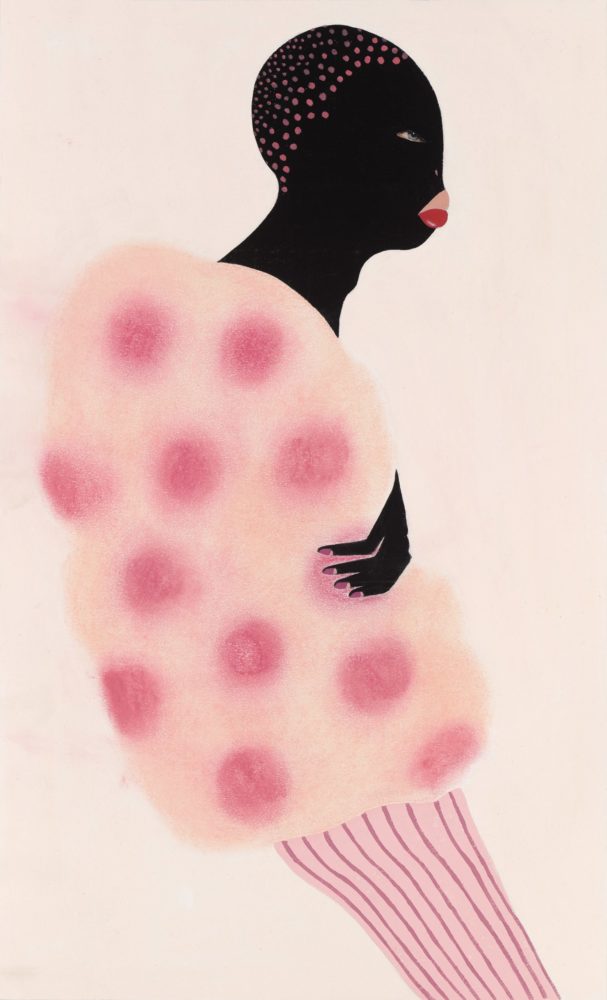
Grace Lynne Haynes, “To The Edge,” 2019, gouache, pastel, and collage, courtesy of the artist.
GRACE LYNNE HAYNES: The cover was for the hundredth anniversary of women’s voting rights. I was looking at the history of women’s voting rights, but women of color weren’t able to vote until 1965, with the Voting Rights Act. I looked at the history of women’s suffragettes, and I came across Sojourner Truth. I had heard about her but not too much in detail. She overcame so much. She escaped slavery with her child, and, despite everything she’d gone through, she became a women’s empowerment speaker. She advocated for women’s voting rights—specifically, Black women’s voting rights. She planted the seed to start that conversation.
Even though I’m not a portraiture artist, I knew that I wanted to honor her as a historical figure, knowing that not a lot of people knew as much about her as they should. I wanted to shine a light on her and all the work she did to bring us to where we are today.
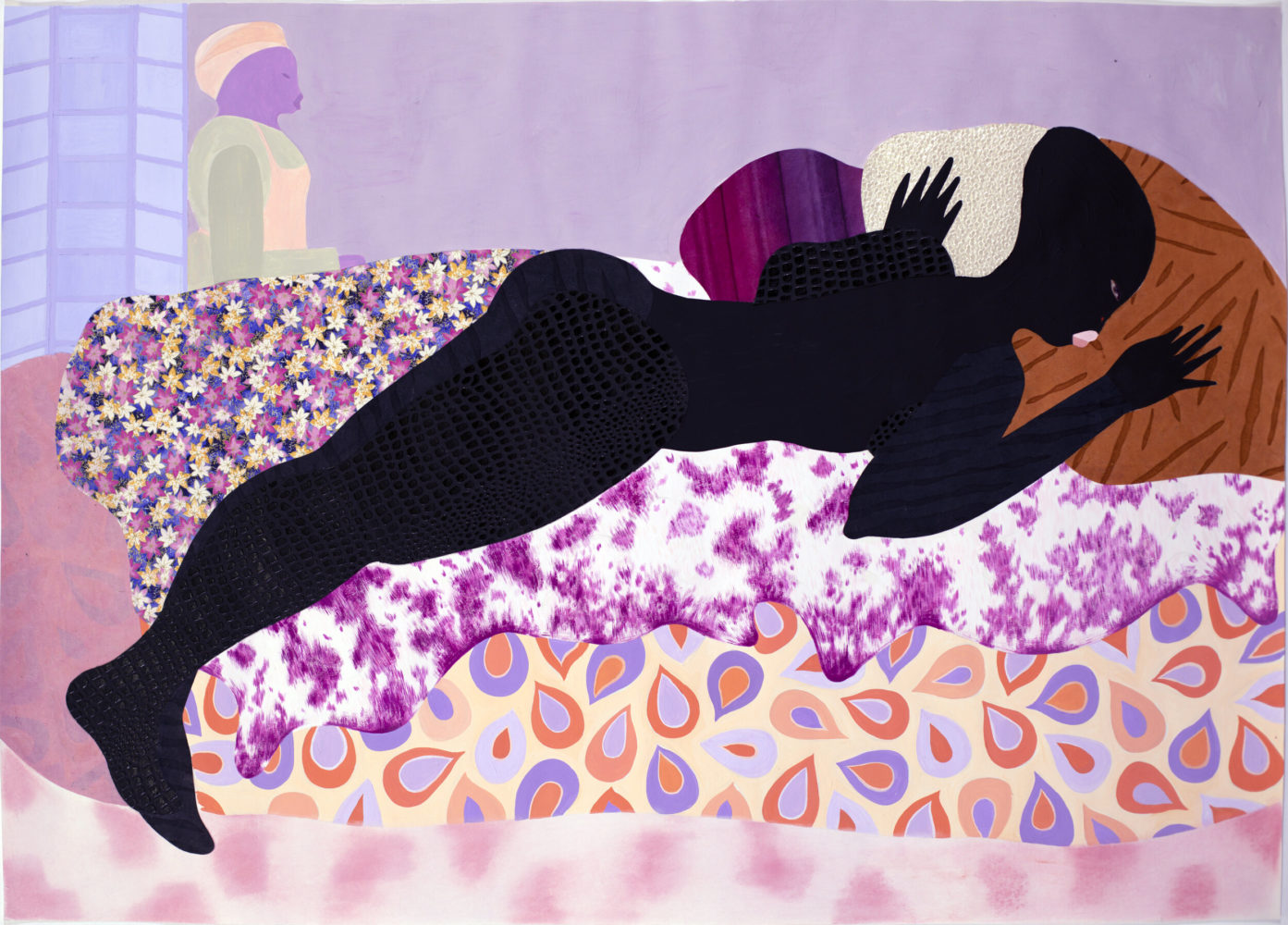
Grace Lynne Haynes, “Almost a Child,” 2019, gouache, pastel, and collage, courtesy of the artist.
WW: In her portrait there are three hummingbirds, an image we see throughout your work. What does the hummingbird represent for you?
GLH: I like to paint hummingbirds in my work as a sign of peace, tranquility, and livelihood. Hummingbirds were my grandma’s favorite bird. My grandma’s story and Sojourner’s story are similar. They were both born during turbulent times in this country and still managed to overcome the odds and live very full and prosperous lives. My grandma grew up in the South, and hummingbirds were her sign of hope. I wanted to honor my grandma and her story by adding in the three hummingbirds to the painting of Sojourner Truth.
WW: How do you approach portraying femininity and the Black female figure?
GLH: Black women are oftentimes perceived as strong and resilient— that we can handle so much and still prevail. Our strength is a beautiful thing and is part of Black womanhood because of how the world treats us. But I also want to showcase who Black women are when we are in our safe spaces, when we are comfortable and at ease in our own homes or in environments that give us peace.
I want to show sides of Black womanhood that aren’t often addressed, which are the softer, more vulnerable sides—more leisurely, calm, and relaxed. We should have diverse representations of Black women. I want to show the complexities and the nuances of Black womanhood and that we can be so many different things.
That strong Black woman stereotype can hurt us and put us in a corner to have the whole community, the whole world, on our shoulders. It shouldn’t always be that way. We should be able to relax in our womanhood and femininity and be seen fully as women.
WW: How do you intentionally incorporate texture and choose color in your paintings?
GLH: The figures are pitch black in my work, and I surround the dark figures with bright colors, often pastels. Often in Western society, dark and light are at odds. They are seen as opposing entities. Dark is often the bad, treacherous, and evil, and light is the good—something we are all seeking. I want to show that dark and light can coexist harmoniously in one image and that dark is not always representative of evil in art. I wanted to show that the dark figure can be surrounded by light without it being opposed to light, but that it can be the light in the center of the image.
WW: You were part of the inaugural residency program in Senegal with Black Rock Senegal. What was your experience like, and how did it impact your practice?
GLH: That was an amazing experience. It was my first time on the continent of Africa, so it was very emotional as well. The residency was so well organized and thought out, so we had a really full experience.
I was inspired artistically in that I wasn’t really doing a lot of collage work until I did that residency. Something really triggered me to expand on my process there. Fabrics are a big part of the culture, and the marketplace has hundreds and thousands of patterns, colors, and shapes. It inspired me to start using fabric in my work and to look at what pattern means outside of aesthetic and how it relates to culture. My goal is to travel throughout the continent and gather fabrics to incorporate into my work in different ways.





